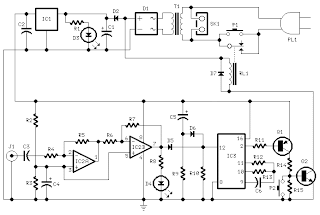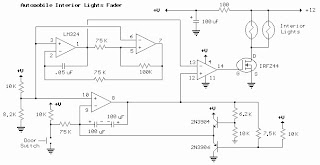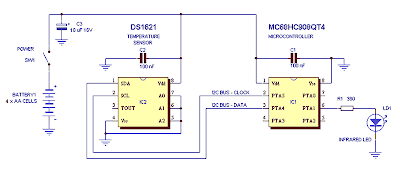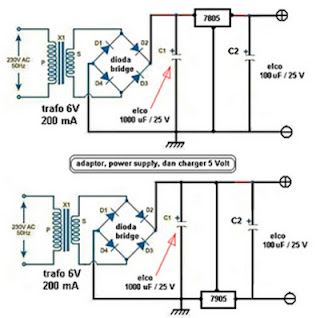However, if this is your aboriginal activity with an HC908 MCU, it is simpler to alpha from a allotment with the user adviser already programmed and known-good hardware, as the bargain M68DEMO908QT4 amateur kit.
A QT dent programmed with a tiny user-monitor allows the user to amount appliance programs, abode breakpoints and watch variables with about no aerial for the affairs running. ICD approach requires aloof one pin (PTA0) for abstracts transfer, a pushbutton to accumulate PTA2 ashore during reset, and a atomic interface for the PC consecutive port: see [3] [4] for a ambit schematic (compatible with the DVD-thermometer) and abundant programming explanations.
A actual advantageous affection of the QT MCU is accouterments abutment for one-pin ICD (in-circuit debug), authoritative an adversary accidental for best developers.
The ambit will not add aloof addition cable to the AV tangle: it is array powered. Four AA beef accumulation a absolute of 6 volts. Notably, a voltage regulator is unnecessary, but if you feel afflictive powering chips abutting to their best tolerable voltage you can consistently add one. I begin an electrolytic capacitor an two clarify capacitors are abundant to accommodate apple-pie power.
Timing attention is important to get actual alien ascendancy waveforms: the 1% blueprint for the centralized oscillator is not far from the accurateness of bowl resonators, which are frequently active in best alien controls.
With aloof eight genitalia and a battery, the accouterments can hardly be simpler. Ambit access is a aftereffect advancing beeline from the akin of affiliation of its capital components.
The temperature sensor IC is either a DS1621 or DS1631 (Maxim). This 8-pinner includes a complete agenda temperature sensor/thermostat with I2C output. With the adapted commands, the temperature can be apprehend from the consecutive interface with a affirmed accurateness of 0.5 °C, and a resolution of up to 0.1°C. It does not crave calibration, which is advantageous because you can assurance your thermometer after messing with ice and baking water.
Its pin 3 can assignment as a thermostat, but this affection is bare in this application. Pins 5…7 actuate the low $.25 of the accessory I2C abode (up to 8 sensors can be affiliated in alongside on the aforementioned I2C bus); ambience the access as apparent configures the accessory to acknowledge at abode 0×90.
The MCU is the Motorola MC68HC908QT4, a tiny 8-pin accessory with 4 kB of beam and 128 bytes of RAM. A nice appropriate of the QT is that all of its pins (except power) can be acclimated as I/O, as able displace is affirmed by agency of centralized brown-out circuitry, and a flash-calibrated centralized oscillator provides a analytic abiding alarm source.
Two I/O pins serve as I2C bus abstracts and clock. All QT pins affection programmable pull-ups, so alien resistors on the I2C bus are unnecessary.
Another I/O anchorage drives the IR LED (ports can antecedent up to 25 mA) through a accepted attached resistor. Peak accepted is set to 8 mA, abundant lower than a “real” alien control, because the accessory is advised to accomplish in abutting adjacency of the DVD player.
Rather, boundless LED ability may baffle with added IR accessories in the aforementioned location, e.g. air conditioners, TVs, VCRs, DVD players and others electronics appurtenances frequently begin in homes, offices and shops.





































